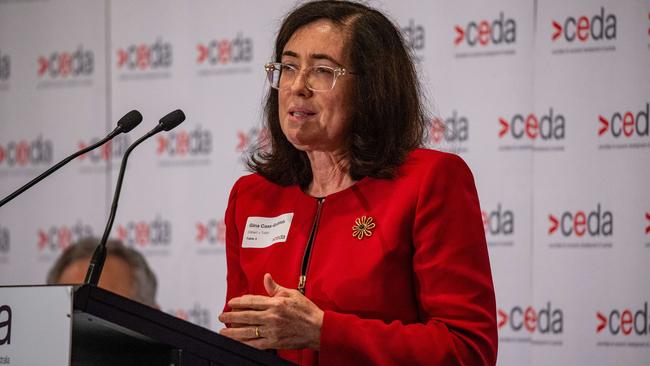Why the ACCC should begin its investigation of deposit rates with Commonwealth Bank
The competition regulator is investigating low bank deposit rates and Commonwealth Bank’s bumper result would be a good place to start.

Why are bank deposit rates so low? The issue has now reached fever pitch and the Australian Competition and Consumer Commission is formally outlining an investigation into deposit pricing.
The strong result this week from the nation’s biggest bank – Commonwealth Bank – would be an ideal place to start the investigation.
As Moody’s Investor Service put it: “The key to the result was the bank’s interest rate margin”.
That’s the gap between what the bank charges on deposits and what it charges for loans, which moved from 1.9 per cent to 2.1 per cent. It may not sound like a big margin change but the ability of the bank to widen that “gap” through keeping deposit rates super low is the secret to surging revenues.
Net interest income grew a whopping 20 per cent over the past year.
CBA’s key saving account, the NetBank Saver, offers just 1.6 per cent to existing customers. The average deposit rate in the market, according to research agency Canstar, is 2 per cent. The official cash rate set by the RBA is 3.35 per cent.
There are many deposit rates set by CBA – and there are just as many conditions attached to these rates – but essentially the bank is getting a fat margin on your deposits.
The exploitation of deposit rates hits older Australians hardest because they depend on savings to supplement their lifestyle. This is the same cohort which does not benefit from introductory rates and is least likely to shop online for the best deals.
In its official announcement, the ACCC – led by chair Gina Cass-Gottlieb – directly mentions this group. “We are aware that deposit and savings accounts are an important source of income for many Australians, typically supplementing their income from employment, superannuation and the pension,” it says.
Crucially, it’s not just that the bank is making more from each dollar on deposit, over any time frame, but the degree to which the bank depends on deposits has gone through the roof.
The issue is not in any way unique to Commonwealth Bank but it just so happens that Commonwealth Bank’s the biggest player in the market by a long stretch. Almost one in every three dollars on deposit in the banking system is held by Commonwealth Bank.
Moreover, the bank has never depended on these deposits so much. After the GFC when deposits as a share of bank funding was very low – near 50 per cent – Australian banks made sure they would never again be so vulnerable to offshore funding.
CBA, for example, continues to load up on Australian deposits money. The deposit funding as a percentage of total funding just keeps climbing; it is now at 75 per cent, up from 74 per cent six months ago.
Will the ACCC step in and change the game? Regulators have stepped into the banking system to reform issues on the lending side of the ledger; there is nothing to stop them doing so with the savings side of the book.
But here’s the thing: Even before the ACCC does its investigation – or wider political pressure makes CBA and its peers lift the rates that savers and investors should be getting on bank deposits – the amount that Australians have on deposit is inevitably going to decline.
Only last week the Reserve Bank released its latest numbers on monetary conditions, and the savings rate – a key indicator of financial health among Australian households – is plunging.
In fact the saving rate is sliding back down to pre-pandemic levels.
Any drawdown in national savings will see the amount sitting in bank deposits start to shrink. In other words, these lucrative high-margin volumes will get reduced, even with more rate rises.
It’s one of the key reasons CBA’s share price fell by nearly 6 per cent after the profit announcement.




To join the conversation, please log in. Don't have an account? Register
Join the conversation, you are commenting as Logout